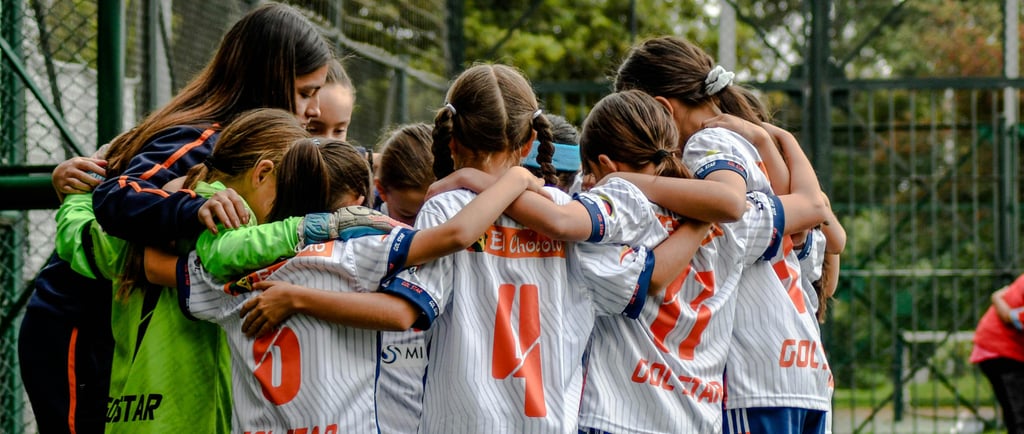Coaching Styles Matter – How Your Approach Shapes Young Athletes and Your Team’s Culture
How you coach matters more than you think—this blog breaks down different coaching styles and reveals how each one can either build up or break down a young athlete’s confidence, motivation, and love for the game.
4/19/20254 min read


If you've ever stood on the sidelines of a youth sports game, you've probably seen it: one coach clapping and cheering every effort, another pacing and shouting nonstop, and maybe another just standing silently with arms folded. Three totally different styles. But which one actually helps kids thrive?
Spoiler alert: how you coach matters—a lot.
Whether you’re a volunteer parent stepping in to help or a former athlete passing your wisdom along, your coaching style impacts everything from how kids feel about themselves to how they perform on game day. In this post, we’re breaking down different coaching approaches, what the research says about their effects on young athletes, and how you can build a style that works for all kids on your team.
Why Coaching Style is More Than Just a Personality Quirk
Let’s start with a big-picture stat: according to a 2022 study published in Frontiers in Psychology, athletes’ perceptions of their coach’s behavior significantly affected their motivation, confidence, and long-term engagement in their sport. In other words, coaching style can either light the fire or snuff it out completely.
Now, that doesn’t mean every coach has to be a rah-rah hype machine—but it does mean the way you teach, talk, correct, and celebrate matters.
The Most Common Coaching Styles (and How They Affect Kids)
Let’s break down the three most common coaching styles seen in youth sports—and how each one plays out on and off the field.
1. The Positive, Supportive Coach ("The Builder")
This coach builds confidence before correcting mechanics. They give clear instruction, celebrate effort, and use mistakes as learning opportunities. They don’t just teach the game—they teach life lessons.
How It Affects Players:
Kids play with more confidence and take more healthy risks.
Athletes tend to stay in sports longer (increased retention).
Players are more likely to enjoy the sport, and less likely to experience burnout.
Bonus Insight: According to the Positive Coaching Alliance, 70% of kids who quit sports say they did so because it wasn’t fun anymore. Coaches who focus on support and learning over perfection help keep that fun alive.
Coach Tip: Use a 3:1 praise-to-correction ratio. Tell players what they’re doing well, then offer 1 specific thing to improve—and always close with encouragement.
2. The Intense, Authoritarian Coach ("The Commander")
This coach is all business. They may get results in the short term through high demands, yelling, or pushing kids hard—but it often comes at a cost.
How It Affects Players:
Kids may perform well initially, but often develop performance anxiety or fear of failure.
Players lose autonomy and can become emotionally dependent on approval.
Burnout and quitting rates are higher with this coaching style, especially in kids ages 8–13.
Research Insight: A 2020 study in the International Journal of Environmental Research and Public Health found that athletes under controlling coaches had higher levels of anxiety and lower levels of motivation and self-worth.
Coach Tip: If you tend to be tough, pair your high standards with high empathy. Set expectations, but build relationships and trust first.
3. The Passive or Disengaged Coach ("The Observer")
This coach lets the game or practice unfold with minimal direction. They may be well-meaning, but their low engagement can leave players confused, under-challenged, or unmotivated.
How It Affects Players:
Kids often feel lost or uncertain about how to improve.
Team discipline, cohesion, and morale often suffer.
Talented kids might thrive, but others fall behind due to lack of support.
Coach Tip: Even if you’re not the loudest voice, you can still lead with consistency. Make sure every player knows what to focus on during practice and gets feedback on how they’re doing.
So… What’s the Best Style? (Hint: It’s Not Just One)
The best coaches find a balance—they combine the structure of high expectations with the heart of encouragement.
They set clear goals. They correct with care. They connect with their players. And they coach the whole person, not just the athlete.
You don’t need to be perfect—but you do need to be intentional.
Coaching Styles Can Impact the Whole Team’s Culture
When you find the right approach for your team, something magical happens:
Players feel safe to try new things—even if they mess up.
They start holding each other accountable (in a good way).
They develop real confidence that carries into school, friendships, and beyond.
Remember, your energy and tone set the tone for everything. And kids are always watching.
Tips for Shaping a More Effective Coaching Style
Here’s how you can start shaping or refining your coaching style:
Self-check often. After practice, ask: Did I build players up today? Was I clear, fair, and encouraging?
Ask for player feedback. It doesn’t have to be formal—just a “What did you enjoy today?” can go a long way.
Make space for mistakes. Confidence grows when kids feel they can mess up without shame.
Praise character, not just skill. “I loved how you helped your teammate up” builds better humans and better teams.
Balance your style based on age group. What works for 14-year-olds won’t work for 7-year-olds. Younger kids need more positive reinforcement and clear instructions.
Your Coaching Style Is Your Legacy
At the end of the season, your players probably won’t remember the score of every game—but they will remember how you made them feel. Did they feel safe? Challenged? Seen?
Whether you’re coaching your own kid or leading a full roster of tiny tornadoes, your approach is shaping how they view not just sports—but themselves.
So lean into a coaching style that builds up, guides clearly, and fosters a love for learning. That’s where the real wins are.

